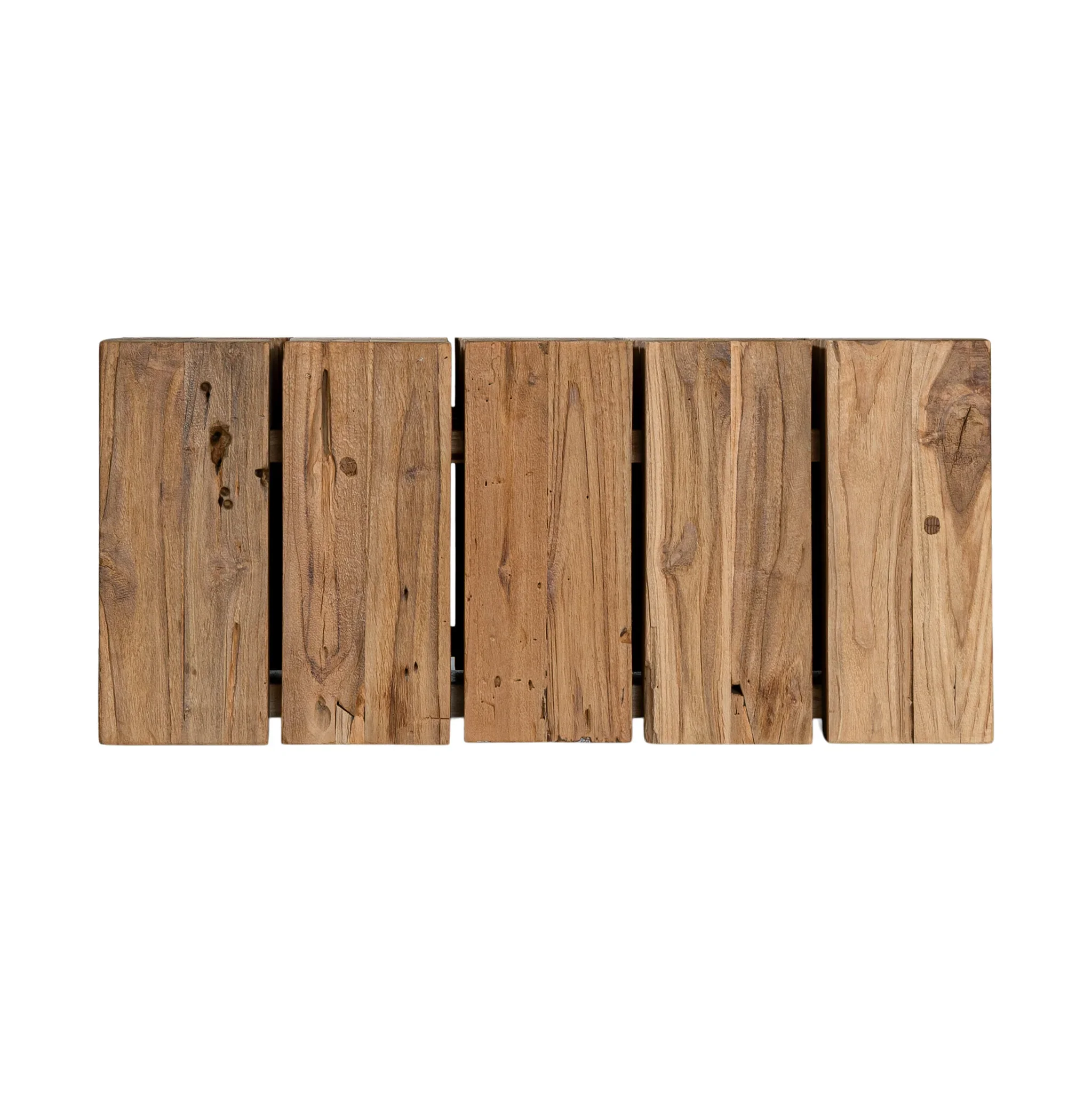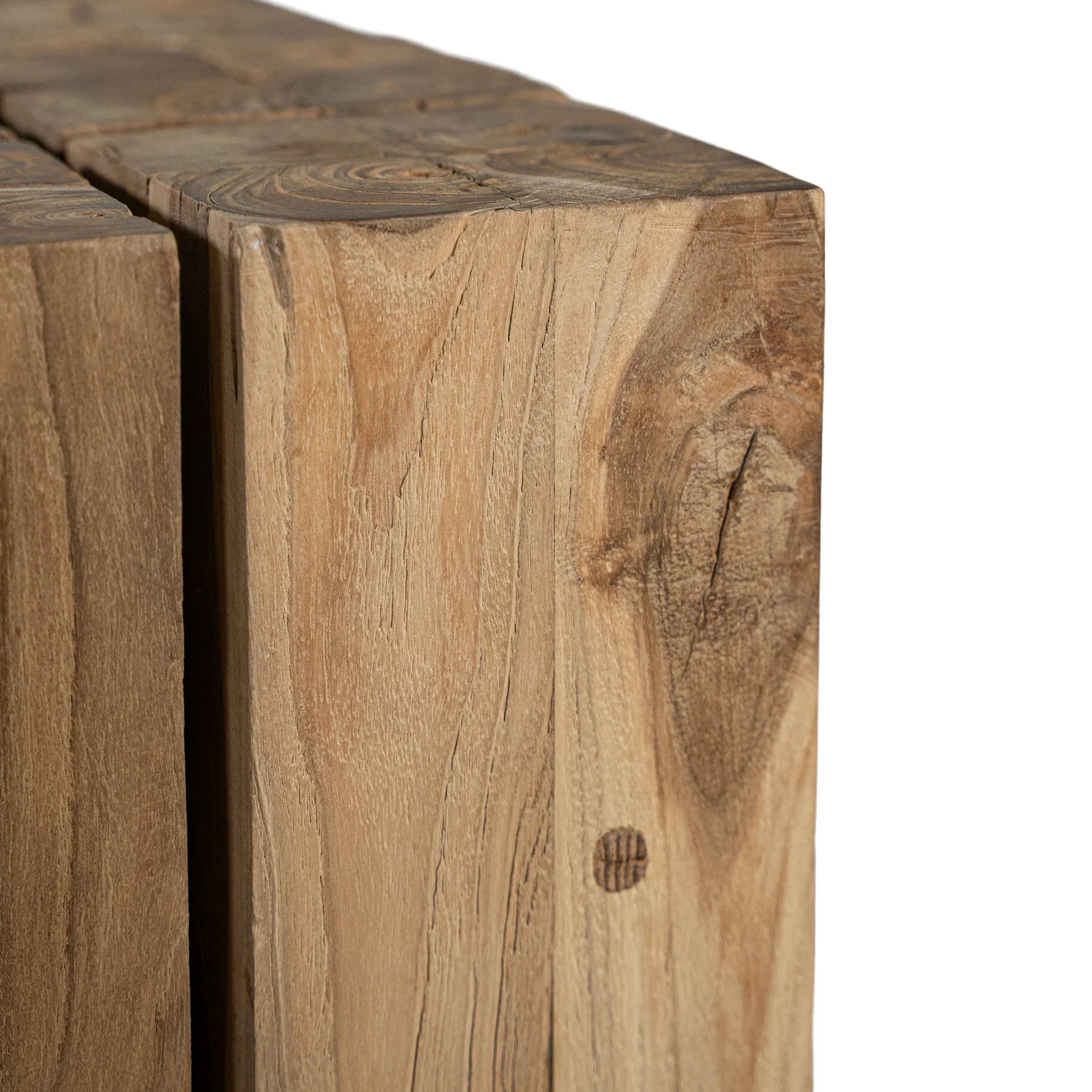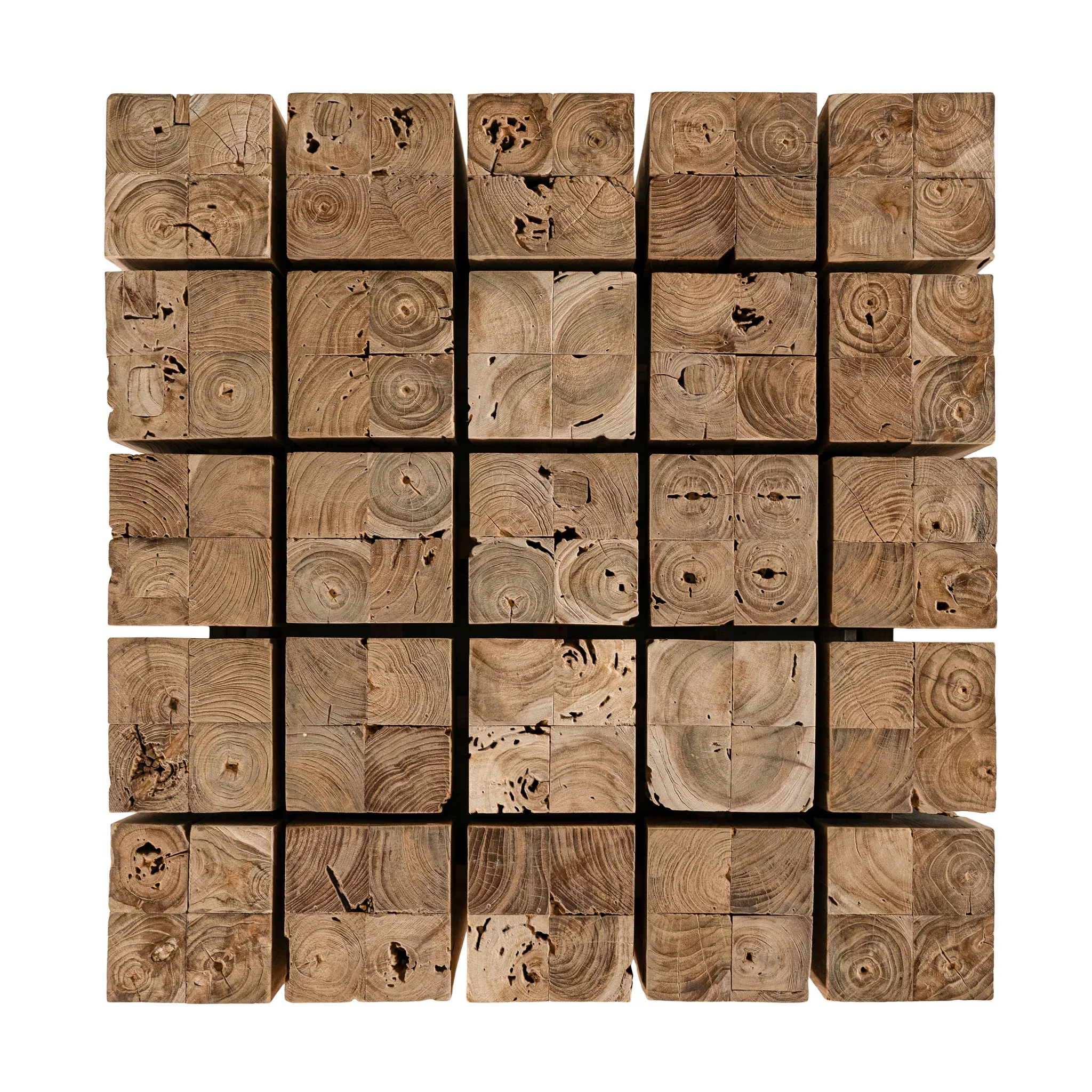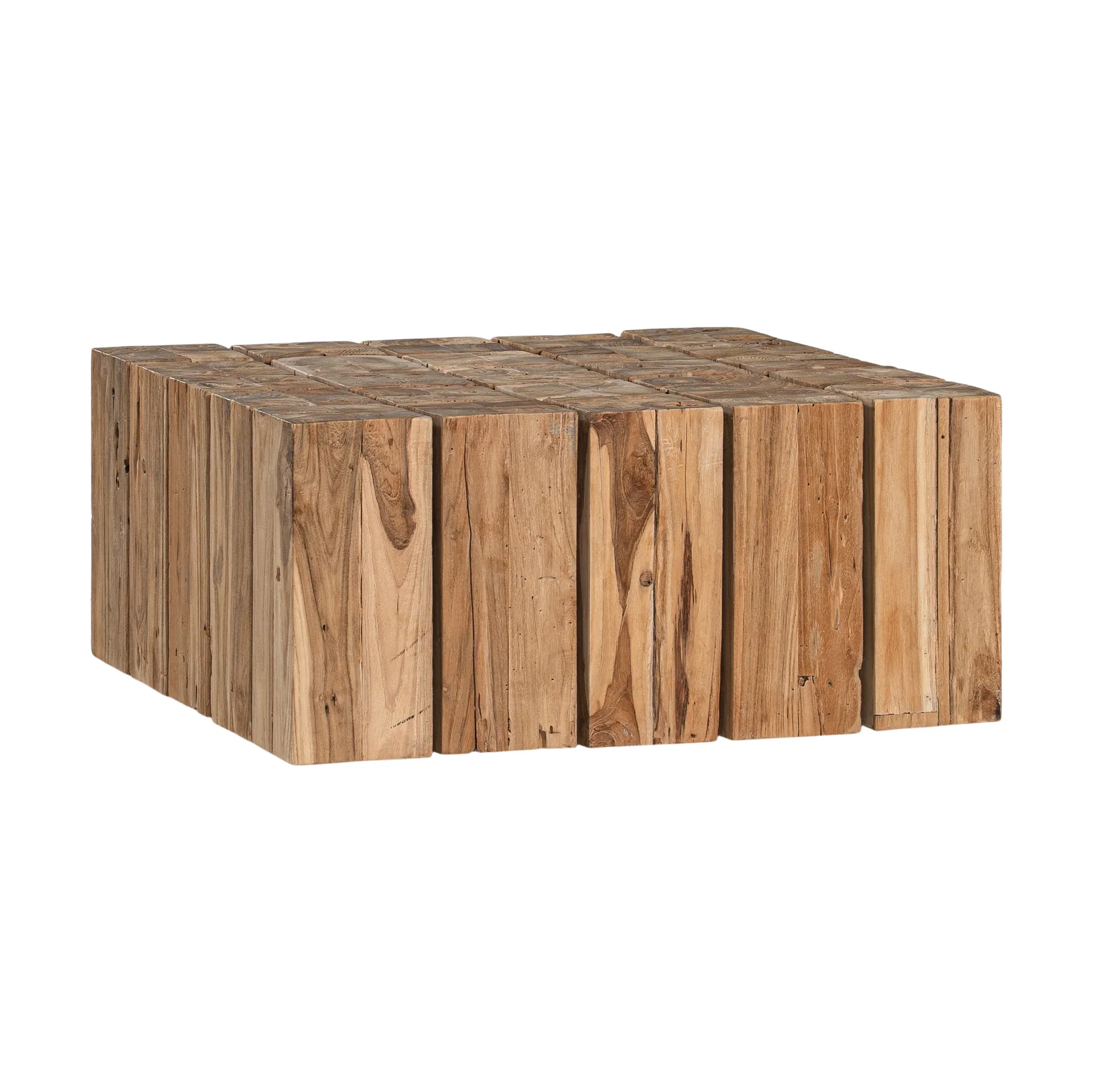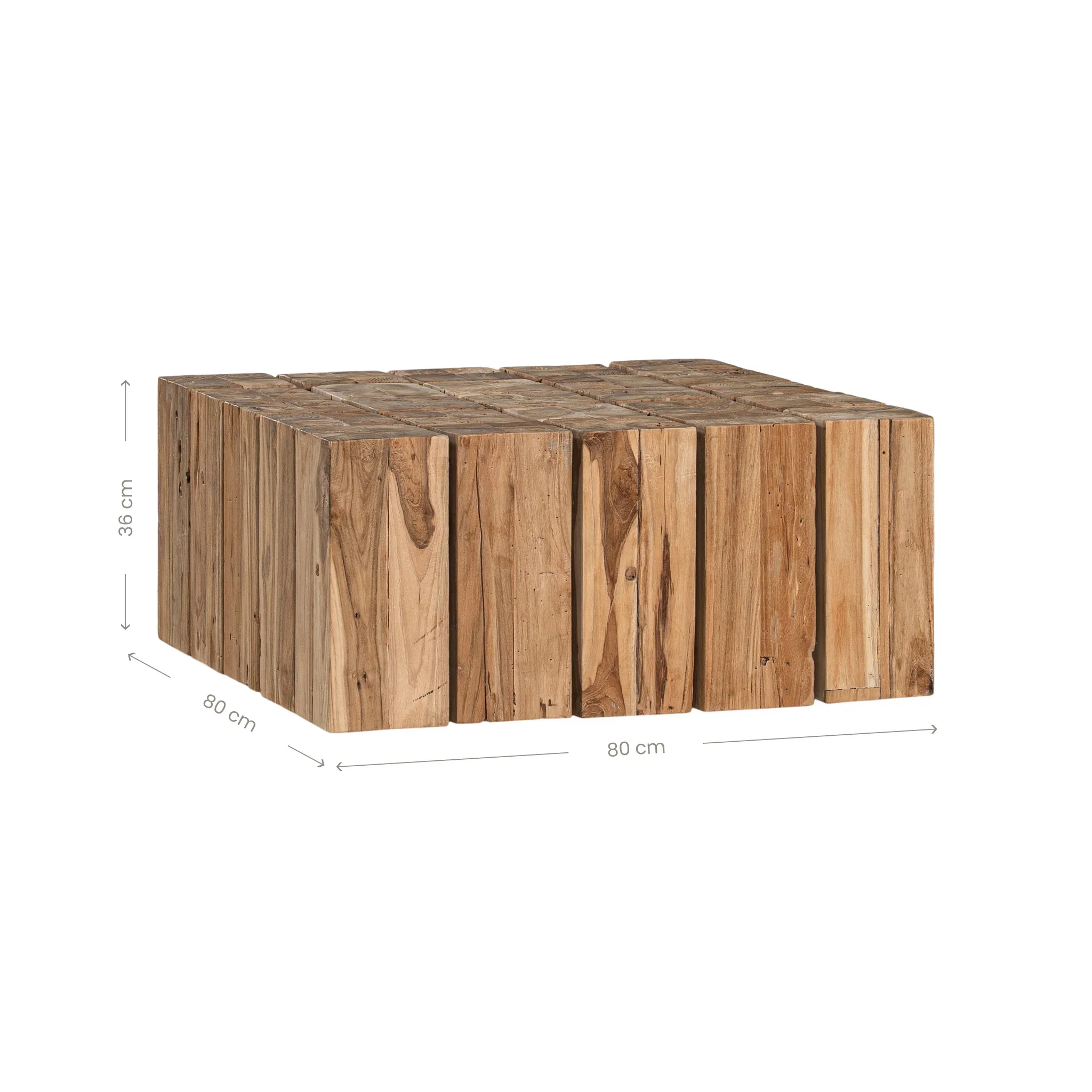Natural characteristics
Our collections are mostly individually hand-made pieces. As most of our products are made from natural materials, texture, colour, and pattern may vary from piece to piece. Reclaimed timbers, naturally weathered materials and off-cuts otherwise discarded are frequently part of the design features.
Natural splitting, cracking, and loss of natural oils may occur and form part of the characteristics and beauty of our products. These are not viewed as imperfections or faults but as part of timber's natural life and beauty.
We believe the result of using natural materials and hand-crafted elements is a testament to the unique qualities found in materials originating from nature.
As every monitor displays different colour tones, the colour of pictures on our website and social media cannot be taken as a true colour indication of the actual products. Some product tones may appear to vary from catalogue or website images.
A natural product: Like other natural wood furniture, the Botswana Dining Table may experience movement and separation as it adjusts to temperature and humidity changes.
Unique variations: Inherent variations in wood grain, tone, and knots are expected and are not considered faults but part of the table's unique character.
Handcrafted: Because it's a handcrafted piece, no two tables are exactly alike, making each one a truly unique statement piece.
As with any natural material, existing fluids and moisture can leach over time. A natural process of teak involves oil moving to the surface of the teak.
This natural process of teak oil leaching can cause staining; this can be especially evident if the furniture pieces are experiencing exposure to weather elements, particularly rain.
We do not recommend placing this natural timber piece directly onto carpets or rugs. Moisture will generally seep through the ends of the timber. If placing it onto carpets or rugs, markings may be avoided by using a protective liner such as thick plastic.
None of the above is viewed as a fault; we embrace these changes as the natural characteristics and beauty of timber furniture.
Mould:
Humidity causes mould to grow. Limited airflow and moisture create a microclimate for mould to develop. In some cases, mould will begin growing on furniture, clothing and other contents within the home.
In instances when this occurs, it is not an inherent fault of the furniture, clothing and other contents; rather, humidity or dampness in the air can supply enough moisture for mould growth on any surface. Mould can occur anywhere, and humid climates provide the optimal conditions for the fungi to grow and thrive on any surface.





